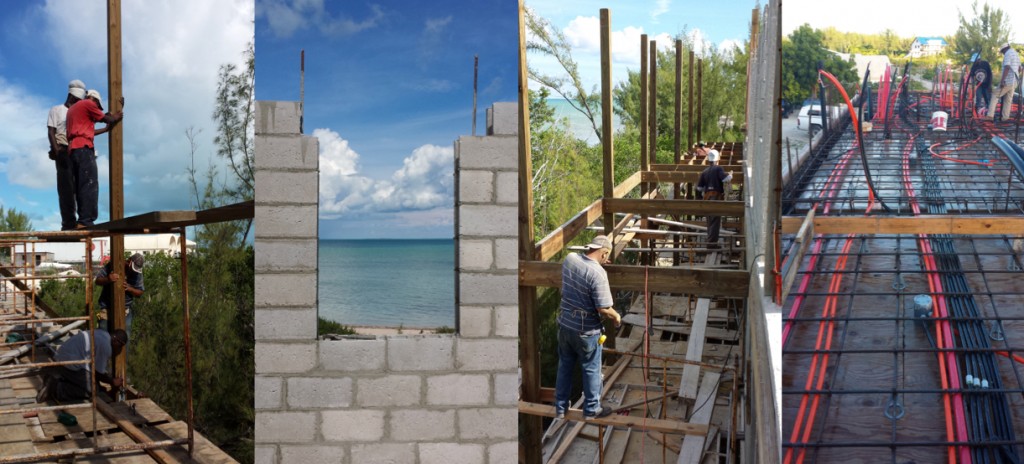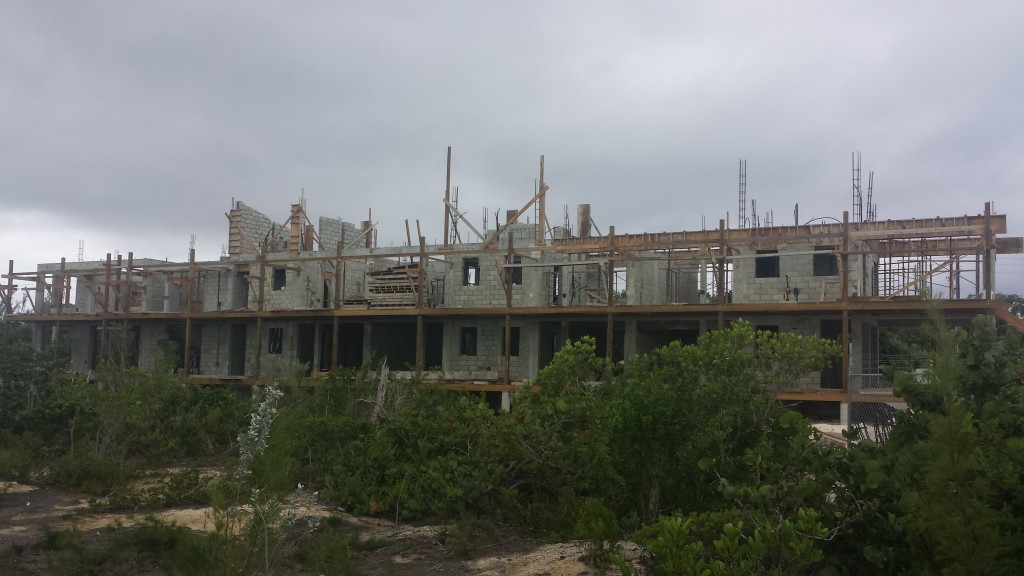The Anderson-Cabot Hall broke ground in January, 2014 and is currently halfway through construction. Once completed, this structure will accommodate up to 44 interns, teaching fellows, and graduate students who are all attracted to The Cape Eleuthera Institute for experience in tropical and marine sciences. This is the first phase of the graduate housing facility and is on track to be completed and ready for occupancy by December, 2015. Currently all the exterior walls are erected and the roof trusses will be installed by the end of 2014. All potable water for this building will be collected off of the rooftop and stored in subterranean cisterns; all energy it consumes will be produced from a photovoltaic array mounted on the south side of the building which will also provide shading for windows; all wastewater will be processed on-site with grey water being reused for flushing toilets.

This building is being constructed following the Living Building Challenge guidelines, the built environment’s most stringent building program. This dictates not only the building materials that are allowed to be used in the structure, but that its performance must be monitored over a 12 month consecutive period after occupancy to meet all objectives (produce 105% of all energy consumed on site; collect all water consumed on site; process all waste water on site; limitation on distance that materials can travel to the construction site). Key building features include: polished concrete floors incorporating recycled glass; 100% passive cooling through precise building placement and thermal mass used in construction, windows and doors that allow 100% of the opening to be operable allowing for maximum ventilation, and a reflective white roof which will help minimize the transfer of heat into the living spaces. PVC is being eliminated from this building as much as possible. All potable water lines are Aquatherm (made from polypropylene), waste and drain lines are ABS plastic, and all electrical conduit is high density polyethylene (HDPE). Decking board will be made from Rumber® (recycled HDPE and car tires), and deck railings are going to be recycled HDPE. The interior and exterior wall finishes will be Marblecrete© which is a natural stucco that resists mildewing and does not require painting. This building is designed for minimal maintenance and maximum comfort all while being a model for sustainable building practices within The Bahamas.
